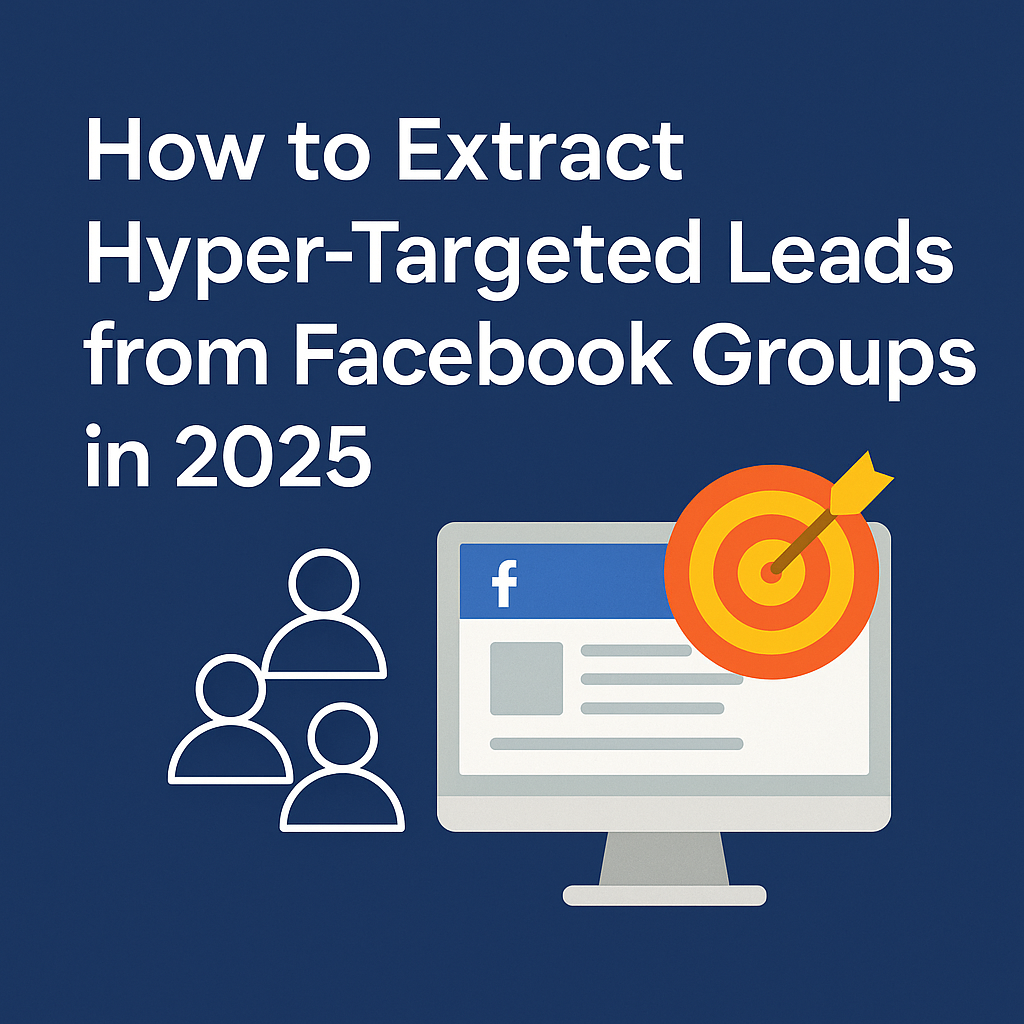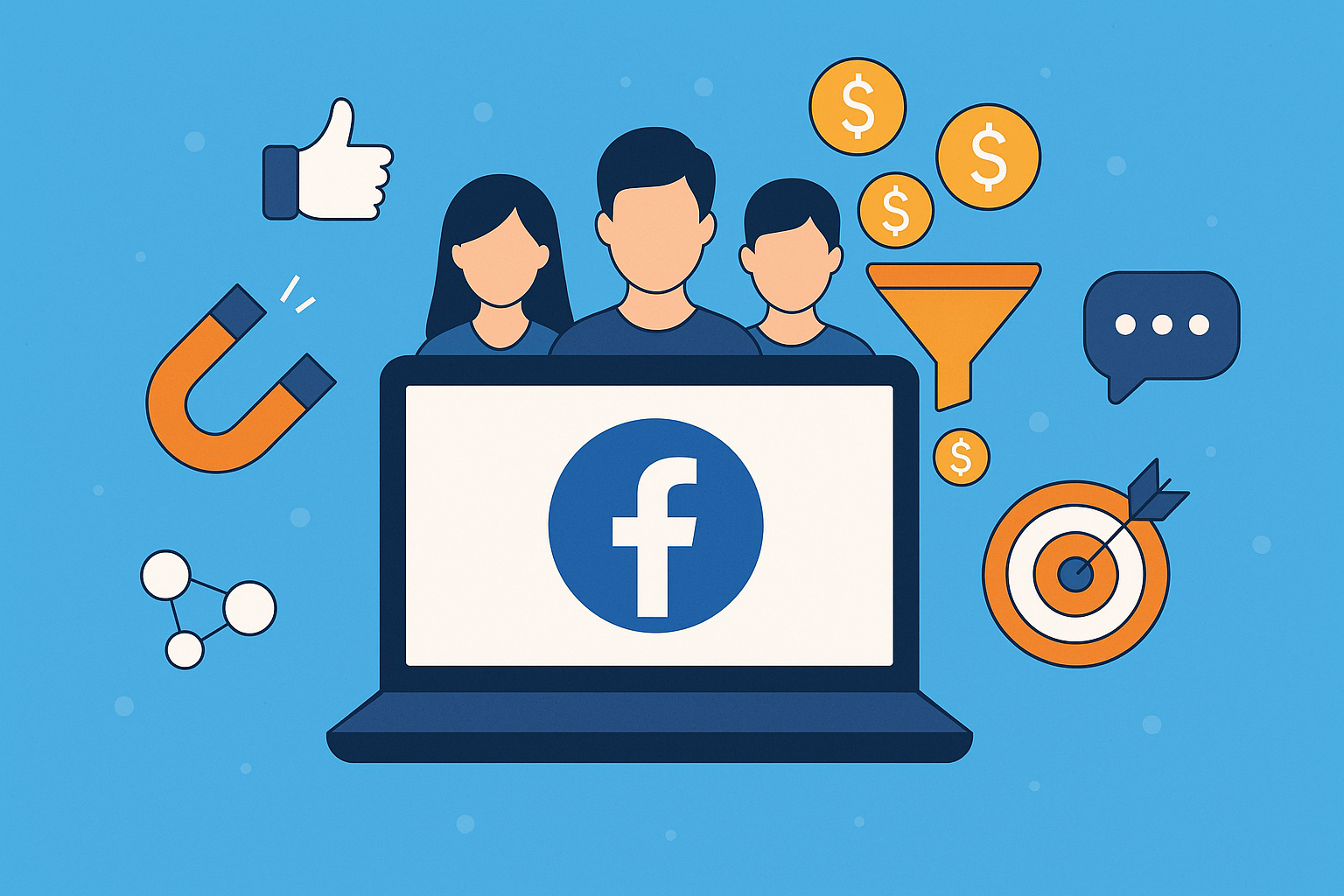
Facebook may not be the newest platform, but it still holds one of the most powerful assets for lead generation: groups.
People join groups to solve problems, share ideas, and connect with others in their niche. That makes groups one of the best places to find leads who are already thinking about solutions like yours.
But there’s a catch. Manually messaging or vetting every group member isn’t scalable.
The answer is a simple system that finds the right people inside the right groups—and helps you connect without cold pitching strangers. This article breaks down how to do that in 2025 without relying on outdated tactics.
Start by Choosing the Right Group
Not every Facebook group is worth your time. Focus on:
Niche-specific groups with active discussions
Groups with a clearly defined purpose (e.g. freelancers, SaaS founders, course creators)
Posts that receive consistent engagement (likes, comments, shares)
These are the signals that a group is healthy. You’re not just looking for numbers, you want to be inside conversations that reflect real needs and pain points.
Look through recent posts. Check what people are asking. Look at who’s commenting. These are your potential leads.
Segment Group Members Before Reaching Out
Once you're in a group, it’s tempting to start pitching. But that’s where most outreach fails.
Instead of contacting everyone, segment members based on engagement:
Who’s commenting on problem-specific posts?
Who’s reacting to discussions about tools, growth, or workflows?
Who’s answering questions instead of just asking them?
These behaviors show intent. A member who just reacted to a post about productivity tools is more relevant than someone who joined a year ago and never engaged.
If you want to auto send message sequences to Facebook group members, look for tools that allow filtering based on activity, not just name.
Connect Before You Message
Here’s something most people miss: your message is more likely to be seen if you’re already connected.
That’s why a smart workflow starts with auto send facebook friend requests to group members.
If someone accepts, they’re showing trust. That means your message will land in their primary inbox, not message requests—so it’s more likely to be read and responded to.
Once accepted, you can send a short message that opens a conversation naturally. No need for cold intros. Just reference the group or a post they engaged with.
Post Inside the Group (But Not Every Day)
You don’t need to post daily to stay visible. One good post can spark comments, questions, and connection requests that keep working for days.
Focus on value-first content:
A checklist
A one-line insight from something you learned
A question that invites discussion
If managing posts across multiple groups feels overwhelming, consider using tools that allow scheduling or one-click posting to Facebook groups. This keeps you consistent without logging in constantly.
Even one post a week, shared to the right groups, can build visibility and engagement with hyper-targeted users.
Use DMs to Start, Not Sell
Once someone engages, don’t jump into a pitch. That’s where most DMs fall short.
Start with a comment or insight related to the group conversation. Keep it short and open-ended. For example:
“Saw your comment in the remote SaaS group—curious what tools you’re using to stay on track this quarter?”
These types of questions open doors. From there, you can guide the conversation toward your offer if it makes sense.
Using tools that support DM automation built for warm outreach (not mass sending) can help with this process. You can automate the initial sequence and then step in manually when someone replies.
This balance of automation and human response is what makes Facebook group outreach scalable and effective.
Final Thoughts
Facebook groups are still one of the most overlooked lead sources online. The challenge isn’t finding people—it’s finding the right ones, at the right moment, and connecting in a way that feels natural.
By focusing on intent, filtering based on behavior, and using automation to start conversations (not replace them), your outreach becomes more efficient and more personal.
Hyper-targeted leads already exist in groups you’re probably in right now. The difference comes down to having a system to connect without relying on guesswork.



Write a comment ...